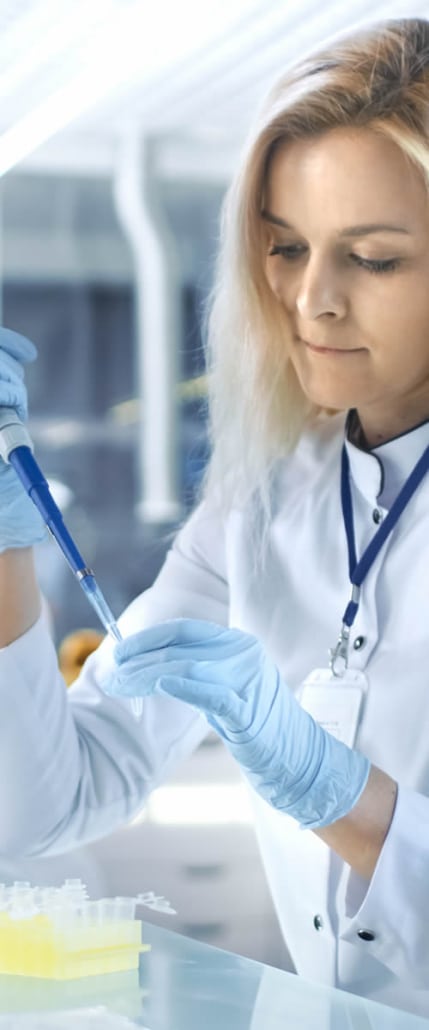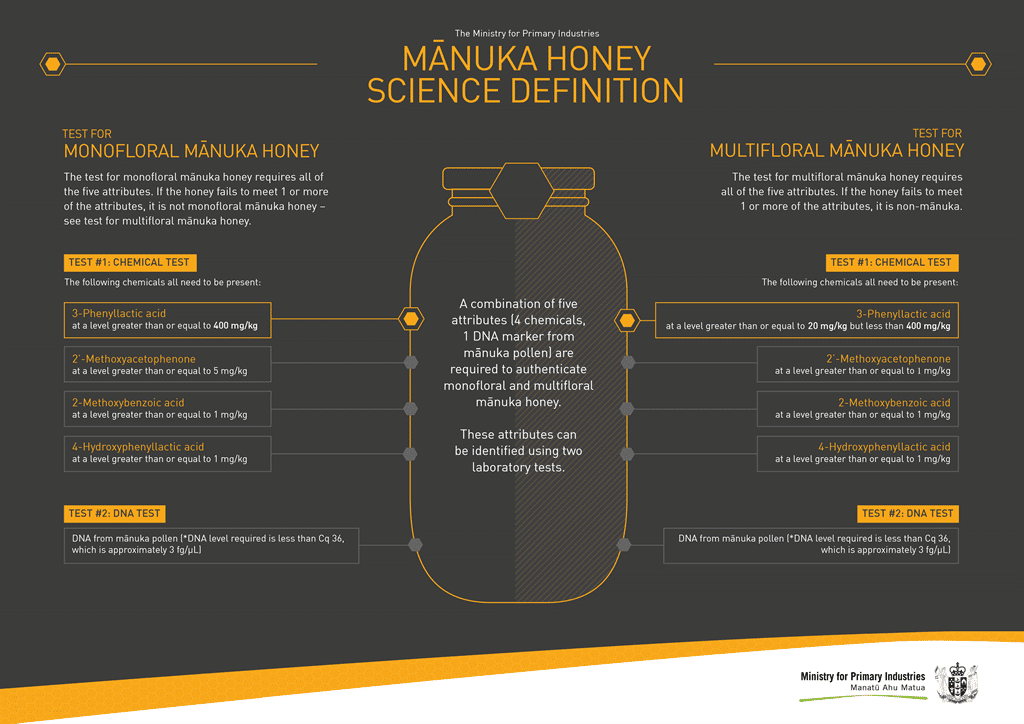Familiar from New Zealand to your home
MNZ’s expertise from country to end product guarantees the best possible quality and integrity of the product. From beekeeping to production, we ensure the purity of the natural ingredients and apply scientific tests to guarantee the quality of our products. All tests take place in an ISO17025 accredited IANZ laboratory. RMP storage of honey barrels, mixing, packaging according to the guidelines of the MPI guarantees a controlled supply chain from hive to end product. We have extensive authenticity and quality tests of the honey, both in the raw material and in the final product phase, and guarantee quality, purity and safety. Our extensive authenticity and quality tests guarantee quality, purity and safety. MNZ produces only raw, unfiltered, unpasteurized monofloral MGO Manuka Honey.
Manuka honey process
Manuka honey is made in New Zealand by bees that collect nectar from the native Manuka tree. It is a rare and special honey that is produced only a few weeks a year when the Manuka trees bloom. Once the bees have done their work, Manuka honey is then carefully removed from the honeycomb, where the extracted monofloral manuka honey is tested for quality, among other things. The monofloral manuka honey is stored at natural temperatures (below 25 degrees) to ensure purity. The honey is then slowly heated in our honey sauna for 12 days, so that the honey eventually reaches a temperature of 35 degrees Celsius. Once this process is complete, our manuka honey is packed in jars and labeled according to the MGO value, before a final quality test is performed. Because all phases take place in-house, we control every step during the production process. Because we handle the honey very carefully during production, and ensure that the natural properties are preserved, a beautiful raw Manuka Honey is created.
Extensive quality testing
Manuka Honey, and in particular a monofloral manuka honey, is a very delicate honey that requires a lot of attention to make a beautiful honey. This has to do with the fact that Manuka Honey is very sensitive to heat. Our tests are all based on the guidelines of the MPI in New Zealand to ensure that our Manuka Honey is a true monofloral raw honey.
Step 1 – AUTHENTICITY
All our monofloral Manuka honey is first tested, in accordance with the guidelines of the MPI, on 5 chemical compounds, so that we only produce monofloral Manuka Honey. These compounds must be present in order to demonstrate the difference between multifloral and monofloral honey.
Step 2 – Chemical test
• 3-Phenyl-lactic acid
2-Methoxyacetophenone
2-Methoxybenzoic acid
• 4-Hydroxyphenyl lactic acid
Step 3 – DNA test
• DNA from Manuka pollen
Step 4 – MGO
One of our other key compounds that we rigorously test is methylglyoxal (MGO). After years of research, Professor Thomas Henle discovered that Methylglyoxal (MGO) is one of the most important compounds in Manuka honey, directly related to its unique, high-quality and natural bioactivity. Measuring the presence of Methylglyoxal (MGO) is one of the requirements of the MPI.
Step 5 – Other essential connections
These are tests for contamination, toxins, adulteration, heat damage and freshness:
• Diastasis
• HydroxyMethylfurfural (HMF)
• C4 Sugars
• Aerobic Plate Count
• Escherichia coli
• Moisture content
• Tutin
• Pyrrolizidine alkaloids (PAs)
• Yeast
• Mold
• Staphylococcus aureus
• Total coliform

MPI (MINISTERY OF PRIMARY INDUSTRIES NZ) – DEFINITION OF MANUKA HONEY
The MPI in New Zealand has established clear guidelines to determine whether Manuka Honey is a monofloral or multifloral honey. MNZ produces only raw, monofloral MGO Manuka Honey.


